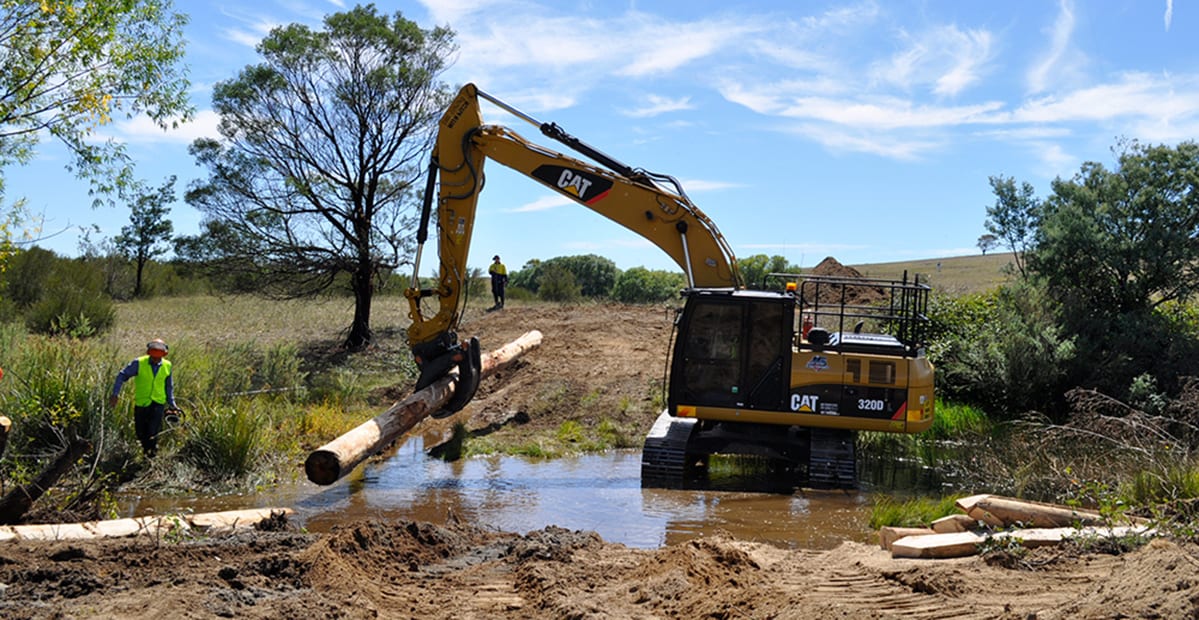Demonstration sites would be a ‘one-stop shop’
LDC wants to establish two ‘whole of enterprise’ demonstration sites to ground truth a wide range of management and landscape remediation techniques.
There is a long list of benefits for graziers who allow their property to be used as a demonstration site. An Expression of Interest (EOI) is available.
Contact Lisa Hutchinson on 0427 594 192 for information.
Senior Project Officer Lisa Hutchinson is behind the plan to establish two demonstration sites to ground truth a range of management and landscape remediation techniques – one in the Bowen, Broken and Bogie (BBB) catchment – and another in the Don River catchment.
The project takes a holistic approach to gully management, working with the landscape and treating gullies as an opportunity to reinstate ecosystem services and restore landscape function of the demonstration properties.
This will be achieved through the installation of small-scale, low-cost interventions that are currently being demonstrated and are functioning well in the Mulloon Creek project near Canberra, designed and run by The Mulloon Institute.
The reduction in velocity and flow of water off property allows sediment to settle and reduce run off from the demonstration sites. Click here for information on the Mulloon Creek project.
The aim is to influence the development of a continuously improving system of catchment scale support for extension, training, farm planning support and regulatory compliance management for rangeland grazing.
“Having demonstration sites where the Best Management Practice (BMP) theories are implemented gives people a ground-truth to help them make similar changes on their own properties,” Ms Hutchinson said.
She said the current science showed the Don and BBB catchments were among the highest contributors of fine sediment in runoff water flowing into the Great Barrier Reef Lagoon.
“Modelling suggests they export four times as much sediment as any other reef catchment,” she said.
While focusing on repairing damaged watercourses and eroding gullies did reduce the sediment load, changing the knowledge, attitudes, skills, and aspirations of the land managers in the area would target the cause, rather than the symptom and have even more effect in the long term.
She said if people could see best management practices applied on the ground, they would better understand the benefit of implementing it on their own property.
The demonstration sites would become a “One-Stop Shop” for land managers looking for solutions to problems on their own properties.
Keen to know more about it? Read the criteria here, fill in the form and submit it.
Not sure? Get in touch with Lisa on email lisa.hutchinson@nqdrytropics.com.au or on mobile 0427 594 192 and she will answer any questions.
Initiating a new Accelerated Research Project
The Accelerated Research Project is an initiative of the LDC’s Exploring New Incentives Activity Area.
The aim is to influence the development of a continuously improving system of catchment scale support for extension, training, farm planning support and regulatory compliance management for rangeland grazing.
It will do this by trialing different approaches to encourage practice adoption and to broker longer-term arrangements to support improved and ongoing incentives to improve water quality from grazing lands.
A suite of best practice, cost effective, transferrable and replicable approaches will be identified to:
- improve landscape function;
- restore ecological health;
- optimise productivity, while;
- simultaneously integrating innovation and technology into grazing management systems.
This will be supported through the delivery of training and extension to build capacity and knowledge within the BBB grazing community.
Results are expected to produce resilient adaptive profitable grazing businesses that produce positive reef water quality outcomes.
Results will be promoted and implemented outside of the trial catchments by extension staff, scientists and the wider grazing community, to demonstrate how this Exploring New Incentives project can be replicated.

